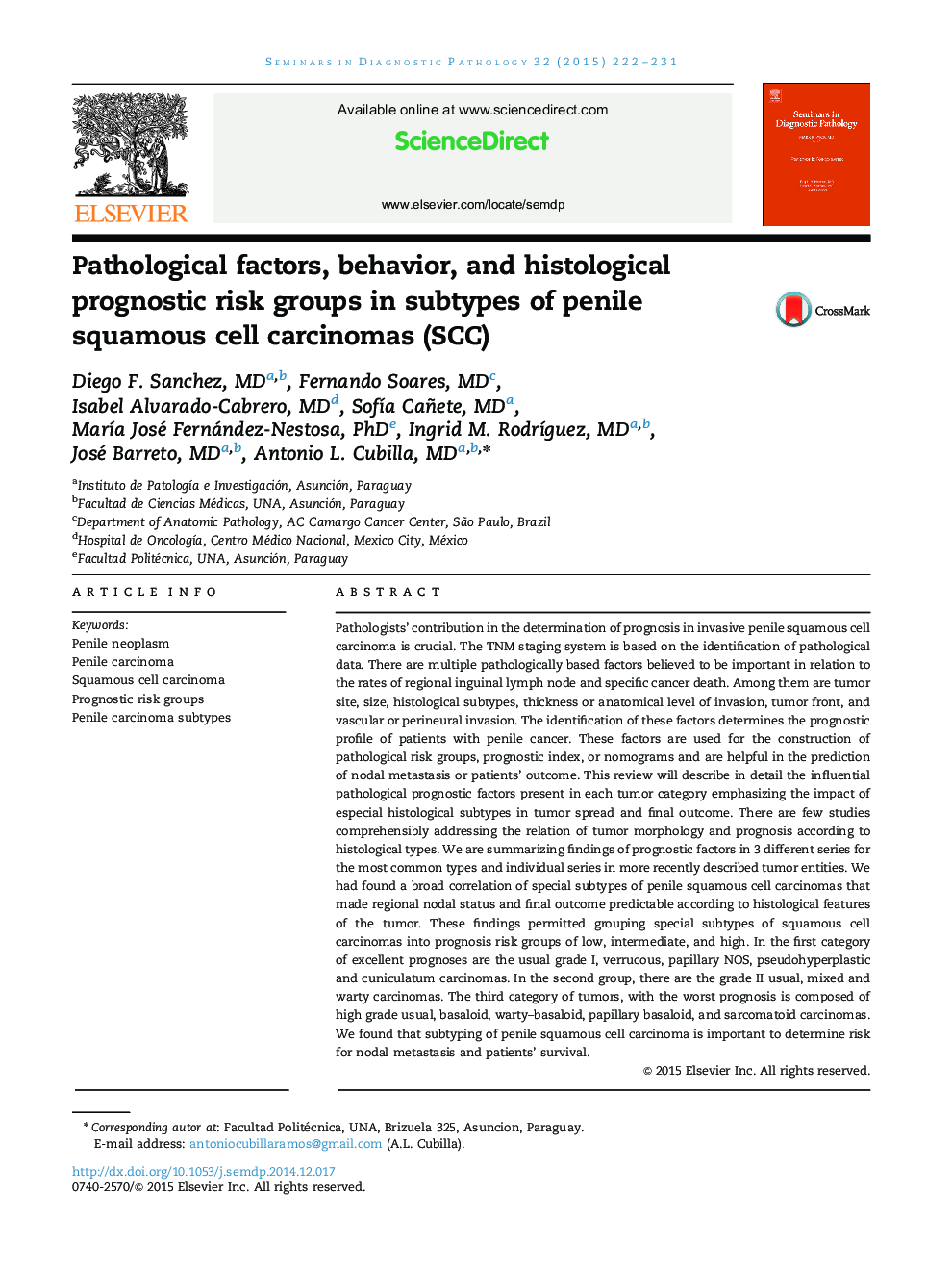| Article ID | Journal | Published Year | Pages | File Type |
|---|---|---|---|---|
| 4138321 | Seminars in Diagnostic Pathology | 2015 | 10 Pages |
Abstract
Pathologists' contribution in the determination of prognosis in invasive penile squamous cell carcinoma is crucial. The TNM staging system is based on the identification of pathological data. There are multiple pathologically based factors believed to be important in relation to the rates of regional inguinal lymph node and specific cancer death. Among them are tumor site, size, histological subtypes, thickness or anatomical level of invasion, tumor front, and vascular or perineural invasion. The identification of these factors determines the prognostic profile of patients with penile cancer. These factors are used for the construction of pathological risk groups, prognostic index, or nomograms and are helpful in the prediction of nodal metastasis or patients' outcome. This review will describe in detail the influential pathological prognostic factors present in each tumor category emphasizing the impact of especial histological subtypes in tumor spread and final outcome. There are few studies comprehensibly addressing the relation of tumor morphology and prognosis according to histological types. We are summarizing findings of prognostic factors in 3 different series for the most common types and individual series in more recently described tumor entities. We had found a broad correlation of special subtypes of penile squamous cell carcinomas that made regional nodal status and final outcome predictable according to histological features of the tumor. These findings permitted grouping special subtypes of squamous cell carcinomas into prognosis risk groups of low, intermediate, and high. In the first category of excellent prognoses are the usual grade I, verrucous, papillary NOS, pseudohyperplastic and cuniculatum carcinomas. In the second group, there are the grade II usual, mixed and warty carcinomas. The third category of tumors, with the worst prognosis is composed of high grade usual, basaloid, warty-basaloid, papillary basaloid, and sarcomatoid carcinomas. We found that subtyping of penile squamous cell carcinoma is important to determine risk for nodal metastasis and patients' survival.
Related Topics
Health Sciences
Medicine and Dentistry
Pathology and Medical Technology
Authors
Diego F. MD, Fernando MD, Isabel MD, SofÃa MD, MarÃa José PhD, Ingrid M. MD, José MD, Antonio L. MD,
